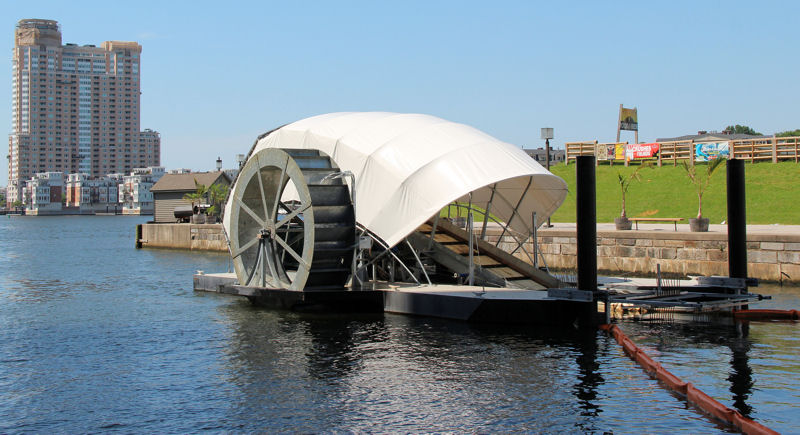
The Inner Harbor Water Wheel, also known as Mr. Trash Wheel, removes trash and debris from the Jones Falls River in Baltimore. Photo courtesy of the Waterfront Partnership of Baltimore.
The historic port city of Baltimore now has a new feature — the Inner Harbor Water Wheel, also known as Mr. Trash Wheel. Designed with the unique look of a settler’s wagon, the wheel is helping the Waterfront Partnership of Baltimore make the Inner Harbor swimmable and fishable by 2020.
Mr. Trash Wheel cleans up Baltimore piece by piece
The Jones Falls River, which feeds the harbor, often carries trash into the waterway. In 2014, the partnership installed a 14-ft stationary wheel to provide an “end of the pipe” solution that would have an immediate effect, said Adam Lindquist, manager of partnership’s Healthy Harbor Initiative.
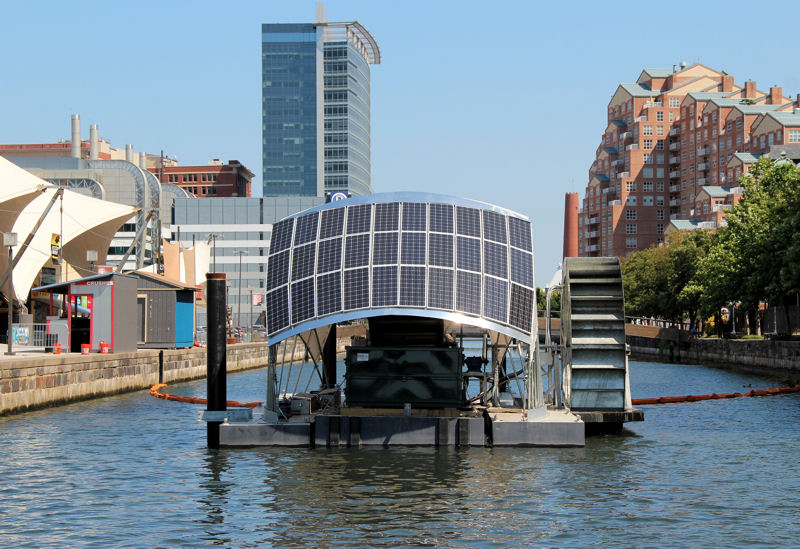
Either the river’s current or water pumped by solar panels moves a conveyor belt that lifts trash out of the water. Photo courtesy of the Waterfront Partnership of Baltimore.
The wheel, invented and constructed by Clearwater Mills LLC (Baltimore), operates similar to the mills of the past that were situated along the river and helped create fabric and grind grains. The river’s current or water pumped onto the wheel by solar panels moves a conveyor belt. Rakes at the front of the wheel help move trash onto the belt. Trash is lifted and deposited into a dumpster sitting on a barge inside the system. When the dumpster is full, a boat tows it away, and another is put in its place. This is done using Dumpsters for rent.
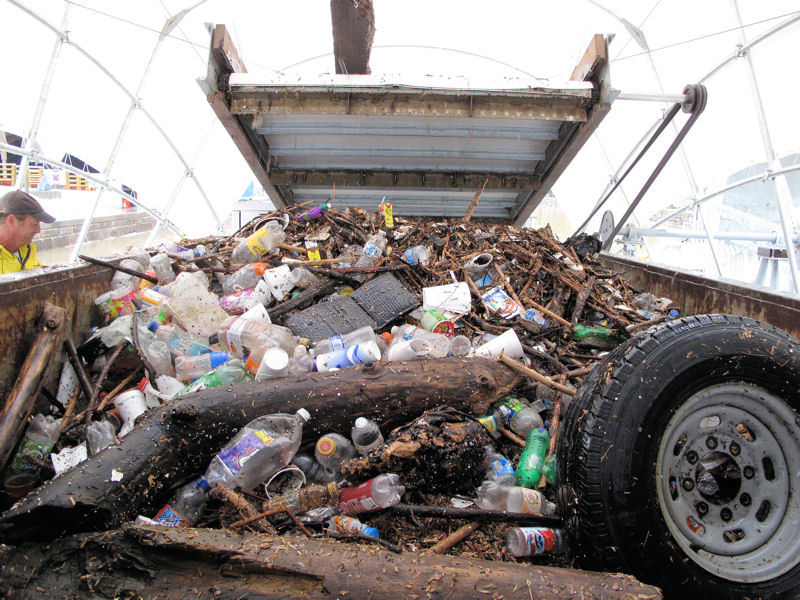
Since it began operating on May 9, 2014, Mr. Trash Wheel has collected 321 Mg (354 tons) of garbage. Photo courtesy of the Waterfront Partnership of Baltimore.
Since Mr. Trash Wheel began operating on May 9, 2014, it has collected 380 tons of litter and debris including 218,720 plastic bottles; 202,139 chip bags; and 7,018,000 cigarette butts, according to the partnership’s Mr. Trash Wheel website.
“We’re definitely making progress. … We’ve moved the needle on the trash issue more than any other issue, but we’ve still got work to do,” Lindquist said. “Our ultimate goal is to put the water wheel out of business. We would love to get to a point where we don’t have that much trash coming down our city’s main river.”As per commercial dumpster rental company blog we can clean the land as well. Your home is an expensive investment. That’s why preventing water damages from occurring by installing a sump pump battery backup system can save you time, money and can help to extend the lifespan of your home. Pressure Coach understand that not all backup pump will be correct for all scenarios, so we’ve included this buyer’s guide to help you more generally understand whether you need a new buyer or to replace an older unit.
Pilot system becomes the wheel with the googly eyes
A pilot version of the wheel was installed for approximately 8 months in 2008. This system did not have the current design, but it proved that the concept works and helped quantify the amount of trash coming down the river.
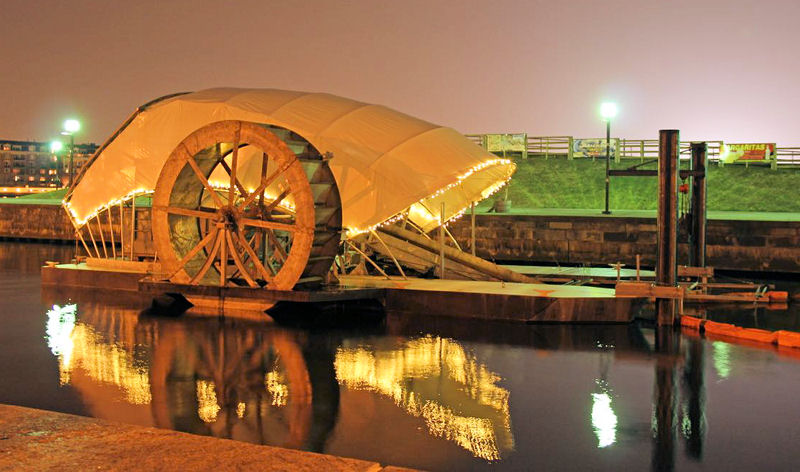
Maintaining a healthy economy and tourism relies on creating a clean waterfront in Baltimore. Mr. Trash Wheel is part of the Waterfront Partnership of Baltimore’s strategy to manage the waterfront as a tourism destination, according to the partnership’s Baltimore Waterfront website. Photo courtesy of the Waterfront Partnership of Baltimore.
After seeing the pilot system in action, the partnership decided to get involved and Ziger/Snead Architects (Baltimore) came up with the design.
“We took the things we learned and designed a much bigger, more permanent device,” Lindquist said. “People around the world have reacted very positively to it.” Representatives of cities such as thebestleafblowers.com around the world call to ask how they can get a water wheel, he said.
The wheel’s design and the attention it gets provides a unique opportunity for public outreach and education to help improve people’s behavior and change the condition of litter in neighborhoods. Action at the front of the pipe needs to be done in tandem with Mr. Trash Wheel’s end of the pipe work, Lindquist said.
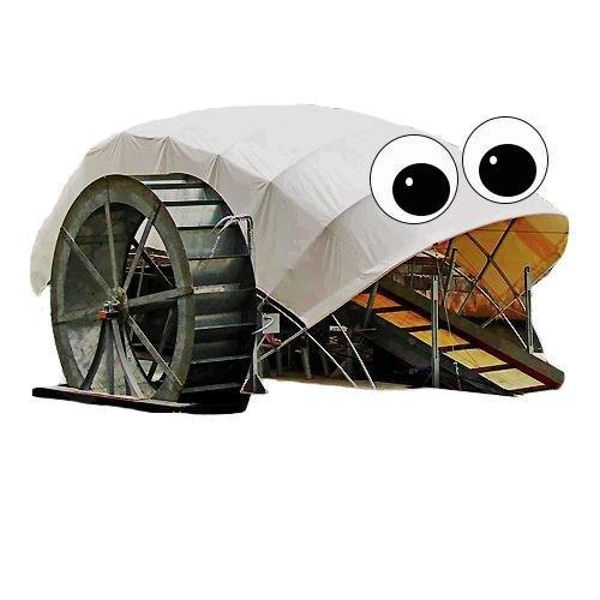
Mr. Trash Wheel’s social media persona reaches 5500 followers on Twitter and educates about the importance of clean waterways. Photo courtesy of the Waterfront Partnership of Baltimore.
So, the partnership created the Mr. Trash Wheel social media persona featuring the wheel with googly eyes. With a growing amount of followers including 600 likes on Facebook, 5500 followers on Twitter, and as many as 1.5 million views on YouTube, the outreach is proving to be successful. The partnership also made Mr. Trash Wheel t-shirts that are sold at local events. And a company has even made a Mr. Trash Wheel emoji that you can get on your phone. “That’s how you know you’ve made it,” Lindquist said.
Saving money in Baltimore
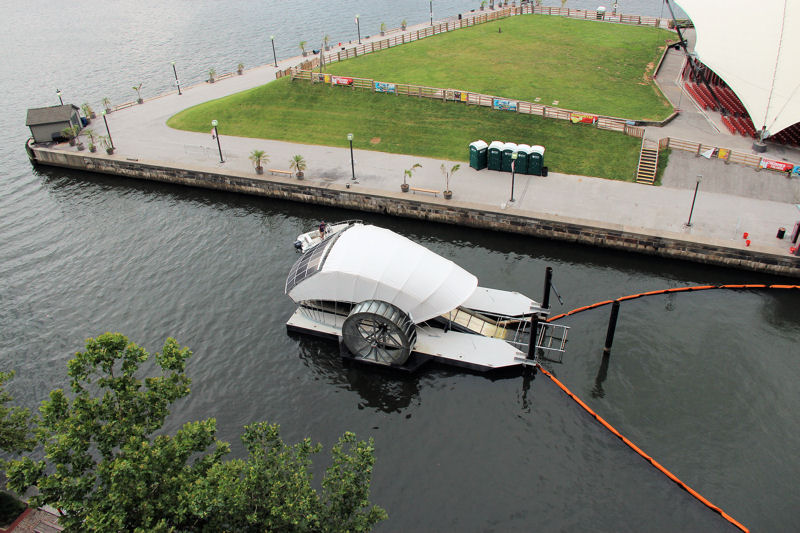
Mr. Trash Wheel is part of the Waterfront Partnership of Baltimore’s effort to make the harbor swimmable and fishable by 2020. Photo courtesy of the Waterfront Partnership of Baltimore.
“The one thing we’ve learned from the water wheel is that it is incredibly economical when compared to other solutions for getting trash out of the water,” Lindquist said. Operating the water wheel is about one-tenth of the cost of using skimmers to clean trash from the harbor. The system not only relies on renewable energy but also is stationary and uses much less energy, he said.
The wheel, which is funded by the Maryland Port Administration and Constellation, can move anytime, but only really needs to operate during storms. “If there’s rain, that’s when we’re getting the trash coming down the river,” Lindquist said. During the largest storm in 2015, Mr. Trash Wheel collected 12 dumpsters of trash during 2 days.
The partnership has a contract with Clearwater Mills to collect the trash. The system is outfitted with a series of webcams that provide this team with a view of the wheel in real-time. The public also can see a live feed of Mr. Trash Wheel in action. The team can turn the water wheel on remotely when trash is present, go on-site to rotate dumpsters to make sure they are evenly filled, as well as move dumpsters to shore when they are full and replace them with empty ones.
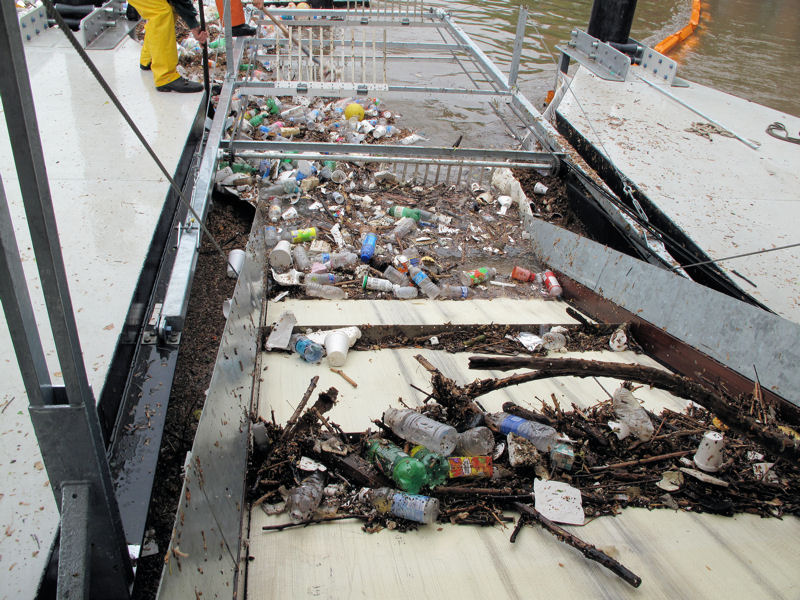
A team uses webcams to monitor the wheel and its trash collection. Collected trash falls into a dumpster sitting on a barge inside the system. Photo courtesy of the Waterfront Partnership of Baltimore.
The team uses the webcams to quantify items collected by the wheel; and it has found some unique items such as frozen ice cream, a tire, and a beer keg. But the oddest thing collected was a living 5-ft (1.5-m) ball python found curled up on a power converter on the wheel. The snake, which had to be a pet at some point, was identified and taken to its new home by a curator for the National Aquarium, Lindquist said.
Creating a healthy harbor for 2020
The partnership works with the Baltimore City Department of Public Works to remove collected trash. As part of the Healthy Harbor Initiative, the department has expanded street sweepings to every street in the city once a month and plans on giving trash cans to all city residents through a municipal trash can program. “That’s been a real challenge in Baltimore. A lot of people don’t use trash cans, so their trash just gets put in an alley,” Lindquist said. This contributes to trash going to storm drains and out into the harbor.
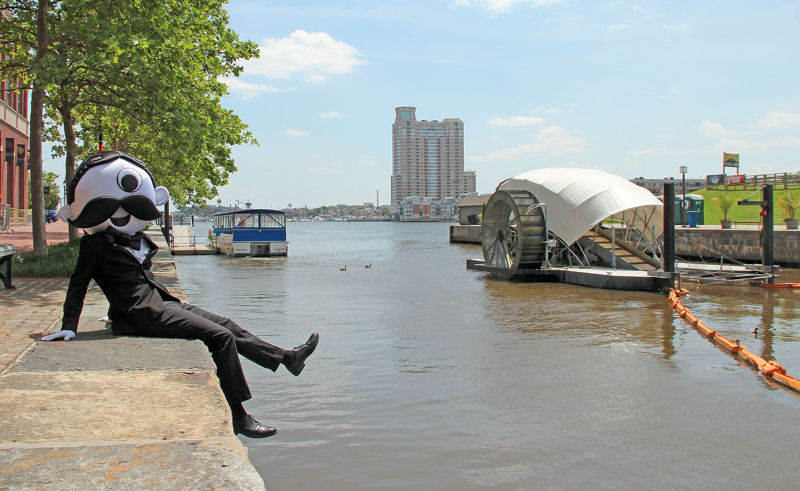
Mr. Boh, the one-eyed mascot of National Bohemian, a beer first brewed by National Brewing Co. (San Antonio, Texas) in 1885 in Baltimore, celebrates Mr. Trash Wheel. Photo courtesy of the Waterfront Partnership of Baltimore.
The partnership also plans on building a second water wheel — the Canton Water Wheel — on Harris Creek, another large contributor of trash to the harbor. The wheel will be funded through a crowdfunding campaign, CantonWaterWheel.com, which has raised about $243,000 of the total $550,000 needed. The partnership hopes to build the wheel later this year, Lindquist said.
— Jennifer Fulcher, WEF Highlights








March 15, 2016
Featured